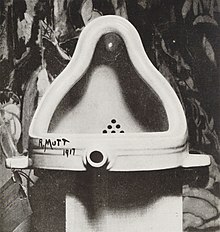 |
| 'Falling Woman of Versailles' by Dan Woodard |
Hello, and welcome to my first blog posting. I’m a sculptor living in the San Francisco Bay Area and have created this blog to show samples of my works in progress as well as newly completed pieces. I’ll also be talking about topics of interest to me in the world of sculpture and art in general. Of course, this doesn’t preclude the fact that I may talk about other items as well. We’ll just have to see what happens.
I also have a web site that highlights several pieces of both my figurative and abstract sculpture. To visit the site, simply click on the link to the right. And, of course, I’d love to hear from you as well. Please feel free to send me comments on my work or any aspect of my postings. Or, if you have any questions, I'll do what I can to answer them. If you’d like to be informed of new postings that I publish, please click on one of the boxes to the right to receive either an email notification or an RSS or other reader feed.
Now, on to...
Marcel Duchamp and ‘Choice’
In this, my first posting, I’d like to talk about the ‘choices’ that an artist makes. When creating any piece of art, the artist is faced by an infinite number of choices. From large choices such as subject matter, size, materials, texture, and composition to seemingly minor choices such as the amount of roundness on the tip of a small toe. The odd thing is; none of these choices are really large or small. They are all equally important and all give meaning and cohesion to the final piece. To put it simply, the ‘art’ is primarily determined by the choices of the artist.
In my own work, I’ve become more and more aware of this over the past several years. Last December, while visiting the museums of Berlin, I became aware of Marcel Duchamp’s views on choice. Duchamp, as you may well known, was a follower of Dadaism and was widely known for his ‘readymades.’ These were manufactured items such as a coat rack, a dog grooming comb, a snow shovel, and, perhaps, most famous of all a urinal, which Duchamp labeled “Fountain” and signed: R. Mutt 1917. Duchamp stated that these objects were elevated to the status of art by the simple fact that the artist ‘chose’ the item. He further stated that, “...because the subconscious attends to the choice—in reality everything has happened before your decision.” In creating his readymades, Duchamp effectively elevated the role of choice to the highest status of the artist’s repertoire. And choice certainly was important to Duchamp. He did not lightly grab any object and declare it a readymade. In fact, over his entire lifetime, Duchamp limited his readymades to no more than twenty pieces of art. These were the pieces that he, through his subconscious, found worthy enough to be considered art.
 |
| 'Fountain,' Marcel Duchamp, signed, 'R. Mutt 1917' |
Naturally, you may or may not agree with Duchamp’s viewpoints or with his self-appointed status as an arbiter in determining what is or what is not art. I know that even five years ago, I myself would have probably laughed at his views and would have considered them another art world example of the ‘Emperor’s New Clothes.’ Now, however, my position has changed. As I become more and more aware of how critical choice is when creating my own art, I can fully accept that a readymade can be valued as an artistic work.
These are my thoughts. What are yours?
 |
| Marcel Duchamp as his alter ego, Rrose Selavy |

2 comments:
Dan, your work is fantastic. I love your voluptuous women!!!
I have always been a great fan of Duchamp, initially for his "break all the rules, take no prisoners" attitude, then his brilliance in helping to broaden my awareness of what art is or can be. His readymades are a perfect example of an intellectual elitism sought for and created in the modern art era. And I mean elitism in the most positive way. He made me understand that art is more than "just what you like". It is about opening a window on the human condition and allowing almost anything to be revered and looked at in a contemplative and inspiring way. But you need knowledge and explanation to do that (becoming part of the 'elite'), and as the 20th century progressed the idea that modern art often needed explanation was at first confusing and off putting; but learning what the artist meant or about their circumstances or influences actually made the meaning of the art more deep and rich. Funny, my own artwork is fairly conventional and obvious; it's what I'm drawn to and good at; but difficult, dense, hard to understand art can be so compelling and sometimes provocative and enlightening. I'm thankful for artist's who push the boundaries of art and force the rest of us to evolve our ideas. Great thought piece Dan. Keep 'em coming...
Post a Comment